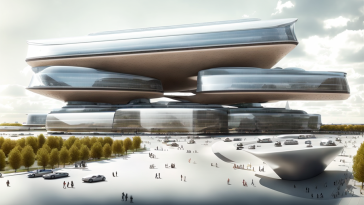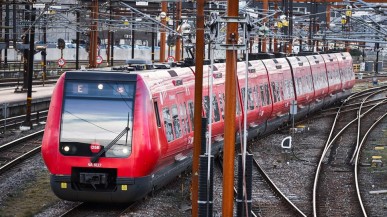Blog / Disruptive Technologies
AI Architecture Design: 5 Key Principles
Categories
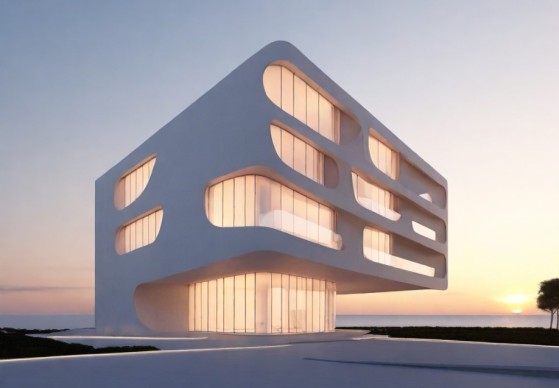
In the ever-evolving landscape of modern construction and design, AI architecture design stands at the forefront of innovation, merging the realms of artificial intelligence with the creative and structural demands of building the spaces of tomorrow.
This fascinating convergence is not just transforming the way architects conceive and execute their visions, but it's also redefining the boundaries of what's possible in the built environment.
With AI architecture design, we are ushering in a new era where intelligent systems collaborate with human creativity to solve complex problems, optimise sustainability, and personalise user experiences like never before.
This article explores the cutting-edge advancements and real-world applications of AI in architecture, highlighting how these technologies are shaping the future of design and construction.
1 - Intelligent Automation and Efficiency
By taking over routine tasks, architects can delve deeper into innovative design elements, leveraging AI for site analysis, material optimization, and generating diverse design options. This not only speeds up the design process but also elevates accuracy and minimises revisions, leading to cost savings.
Extending to project management, AI's predictive capabilities ensure precise planning and resource allocation, spotting deviations early to keep projects on track. Real-time monitoring of construction against plans allows for swift adjustments, optimising time and resources. Intelligent automation thus marks a new era in architecture, merging efficiency with sustainability, and setting a new standard for innovative, eco-conscious projects.
“At any stage of the design process, a machine is responsible for making decisions - whether it involves classifying elements within a street view, generating conceptual images for an architectural project, or producing a space layout”, explains Thomas Takeuchi, Co-Founder and CEO at arqgen and professor of ZIGURAT’s artificial intelligence in construction course.
Real world example: The Edge, in Amsterdam, exemplifies the pinnacle of intelligent automation in architecture, leveraging an advanced Building Management System (BMS) powered by AI. This system is integrated with over 28,000 sensors, optimising the building's lighting, heating, cooling, and air quality. By analysing real-time data on occupancy, temperature, humidity, and CO2 levels, the BMS customises environmental conditions, significantly enhancing energy efficiency.
- Sensors: Over 28,000 sensors for comprehensive environmental and occupancy data.
- Energy Efficiency: Utilises natural light and LED lighting, reducing electricity usage.
- Climate Control: Smart adjustments based on real-time occupancy and environmental data.
- Space Utilisation: Dynamic workspace allocation based on employee needs and schedules.
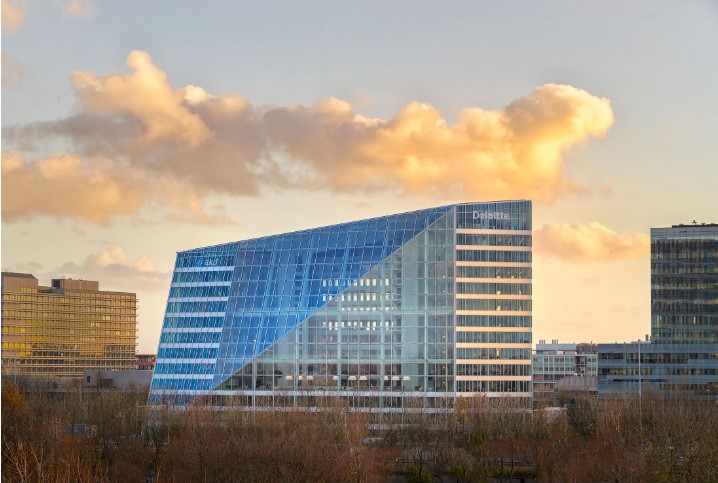
2 - Data-Driven Design Decisions
In the realm of architecture, the embrace of data-driven design decisions marks a transformative shift towards creating spaces that are not only aesthetically pleasing but also supremely functional and sustainable. This approach leverages the power of big data to inform every aspect of the AI architecture design process, from conceptualization to execution. By analysing a wealth of information—ranging from environmental conditions and material efficiencies to user behaviours and preferences—architects can craft buildings that truly resonate with the needs of their inhabitants and the ecosystems they inhabit.
For instance, data on sunlight exposure and thermal performance can dictate the placement of windows and the selection of insulation materials, optimising energy use and comfort. Similarly, insights derived from foot traffic patterns within buildings can inform more efficient and user-friendly layouts. The integration of predictive analytics allows for future-proofing designs, ensuring buildings can adapt to changing needs over time. This data-centric approach not only elevates the precision and relevance of architectural projects but also significantly enhances their sustainability and user satisfaction, heralding a new era of informed, intelligent design in architecture.
Real world example: The Shanghai Tower in China stands as a prime example of data-driven design in action. This 632-metre tall skyscraper utilised advanced computational models to optimise its twisty, asymmetrical form, directly responding to wind and gravity forces to reduce material usage and construction costs. Specifically, its design underwent rigorous wind tunnel testing, informed by data analytics, to achieve a 24% reduction in structural wind loading compared to a rectangular building of the same height.
- Height: 632 metres, making it the second tallest building in the world.
- Wind Tunnel Testing: Computational modelling to analyse wind forces.
- Energy Efficiency: A double-skin facade and spiralling form reduce wind load and energy consumption.
- Sustainability Features: Rainwater recycling systems and wind turbines at the pinnacle for renewable energy generation.
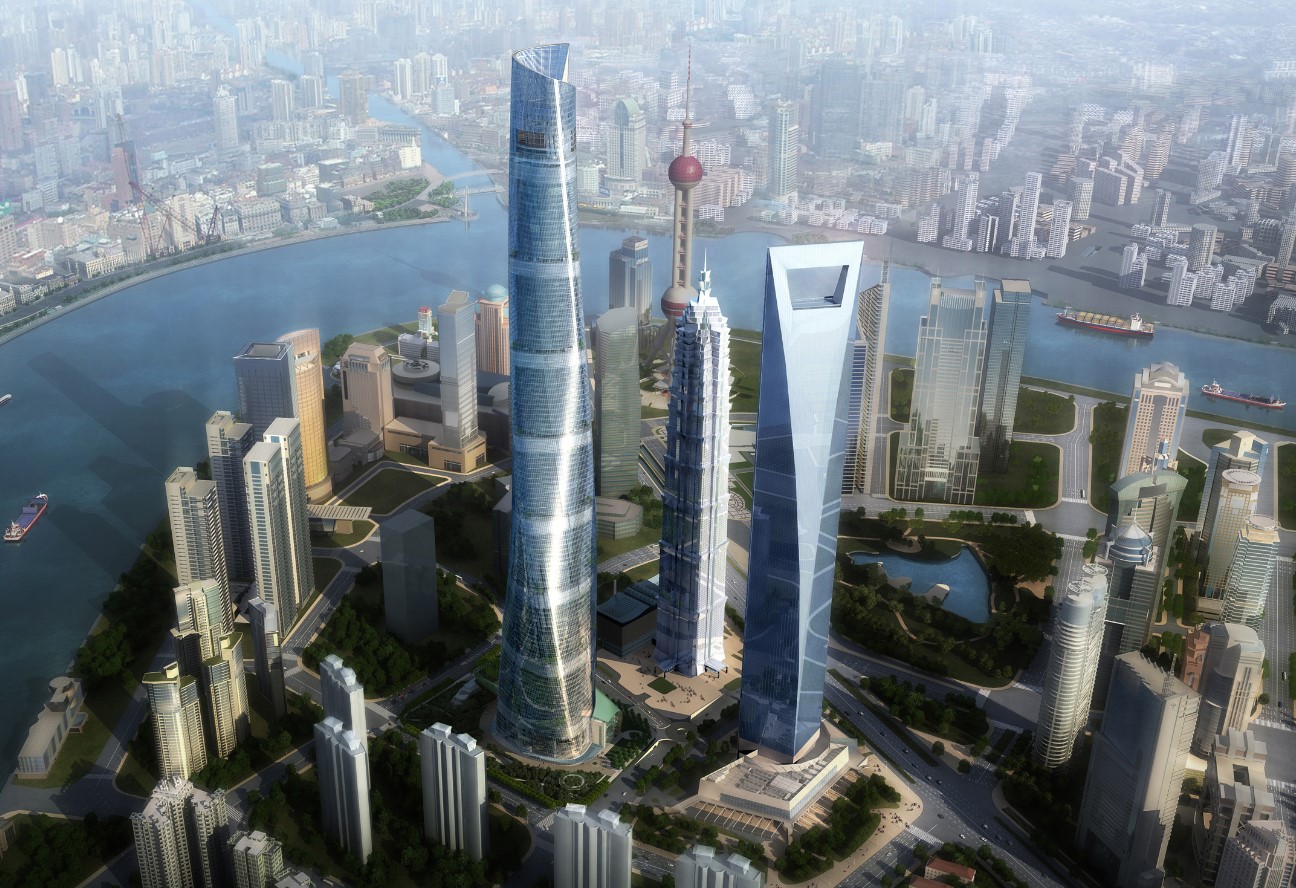
3 - Sustainable and Eco-friendly Design
Sustainable and eco-friendly design is now at the forefront of architectural innovation, addressing urgent environmental concerns through smart, resource-conserving strategies. By incorporating energy-efficient features like solar panels, green roofs, and natural ventilation, architects can dramatically lower buildings' energy needs. Sustainable materials such as bamboo and recycled steel reduce environmental impact and improve indoor air quality. The design process also leverages advanced software for energy simulation, optimising building orientation and layout for maximum environmental harmony.
These strategies extend the building's lifecycle, ensuring that from construction to demolition, environmental impact is minimised. The result is not just cost savings in operations but also healthier living spaces for occupants, marrying sustainability with modern luxury. This shift towards green architecture underscores the industry's commitment to environmental responsibility and innovation, charting a path towards a greener, more sustainable future.
Real world example: The Bullitt Center in Seattle, Washington, epitomises sustainable and eco-friendly design, setting a benchmark for green buildings worldwide. Dubbed "the greenest commercial building in the world," it achieves net-zero energy consumption through a host of innovative features:
- Solar Power: A 14,000-square-foot rooftop solar panel array generates more energy than the building uses annually.
- Rainwater Harvesting: A system that collects and treats rainwater for all building needs, including drinking water.
- Energy Efficiency: Triple-glazed windows and a super-insulated facade minimise heat loss, contributing to the building's exceptional energy performance.
- Natural Ventilation: A computer-controlled system opens and closes windows to maintain ideal indoor temperatures without air conditioning.
- Sustainable Materials: The building utilises non-toxic, locally sourced materials, reducing its environmental impact.
The Bullitt Center not only surpasses LEED Platinum standards but also meets the rigorous requirements of the Living Building Challenge, showcasing the feasibility of sustainable urban development.
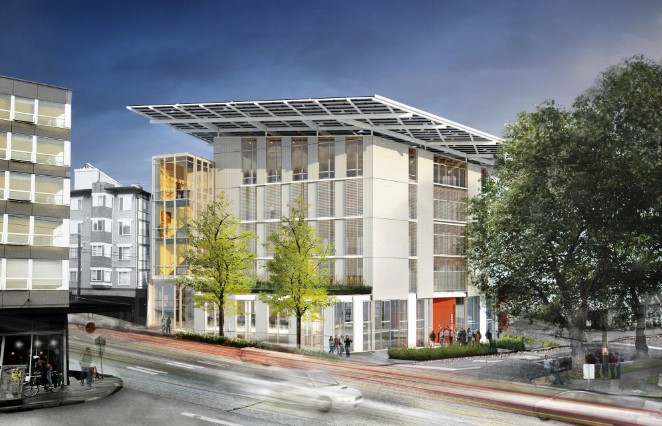
4 - Customisation and Personalisation
Customisation and personalisation in architecture, fueled by AI, are reshaping how spaces meet individual preferences and needs. This evolution enables designs that adapt to specific lifestyles and aesthetic desires, leveraging AI to analyse user behaviour and environmental data for tailored environments.
Smart systems in homes can adjust lighting, climate, and even spatial arrangements based on occupants' habits, elevating comfort and efficiency. In commercial spaces, real-time data facilitates the optimal use of areas, enhancing energy use and occupant satisfaction. Such customization not only improves functionality but also strengthens the occupants' emotional bond with their surroundings. This marks a shift towards architecture that is not just built but is grown around the unique patterns of those who inhabit it, offering spaces that are both adaptive and deeply personal.
Real world example: The Salesforce Tower in San Francisco serves as another illustrative example of how customization and personalization are integrated into AI architecture design, utilising technology to enhance occupant comfort and environmental efficiency:
- Dynamic Glass Technology: The building features View Dynamic Glass, intelligent windows that tint automatically in response to external conditions, optimising natural light while minimising glare and heat gain.
- Personal Comfort Zones: The building employs an advanced underfloor air system, allowing individual occupants to control the temperature and airflow in their immediate vicinity, enhancing personal comfort.
- Energy Efficiency: Designed to achieve LEED Platinum certification, it incorporates high-efficiency LED lighting, water recycling systems, and has one of the city's largest blackwater recycling systems.
- Occupant Experience: A dedicated app enables occupants to interact with the building’s features, book amenities, and access personalised environmental controls.
- Sustainability Features: The tower's top is equipped with a high-efficiency air filtration system that contributes to its sustainability goals.

5 - Predictive Analysis and Risk Management
Predictive analysis and risk management in architecture harness big data and AI to foresee and mitigate project challenges, enhancing safety, sustainability, and efficiency. This technology allows for the early identification of potential structural issues, environmental impacts, and construction delays, facilitating timely and cost-effective interventions. For instance, predictive models can use climate data to inform designs resilient against future weather conditions or identify supply chain risks that might stall projects.
This proactive approach in AI architecture design optimises resource use, reduces waste, and ensures projects not only comply with but surpass safety standards. By anticipating problems before they occur, architects can make informed decisions that lead to more innovative and resilient designs. Predictive analysis marks a shift towards more strategic, informed architectural practices, emphasising the creation of buildings that are prepared for tomorrow’s challenges today.
Real world example: The Citic Tower, also known as China Zun, in Beijing, China, is an example where advanced technologies, including AI and predictive analysis, have been integrated into its design and operational systems for enhanced performance and safety. Standing as one of the tallest buildings in Beijing, China Zun uses several innovative technologies to manage risks and improve efficiency.
- Structural Health Monitoring (SHM): The tower is equipped with a state-of-the-art SHM system that uses sensors and AI to continuously monitor the building's structural integrity. This system can predict potential issues by analysing data trends over time, enabling preemptive maintenance and ensuring the building's long-term safety.
- Wind and Seismic Analysis: Utilising AI-based predictive models, the building's design incorporates features to mitigate the impact of high winds and seismic activities. The tapered silhouette and the unique structural design were optimised through simulations to ensure stability under various conditions.
- Energy Management and Sustainability: AI algorithms optimise the building's energy consumption, adjusting lighting, heating, and cooling systems in real-time based on occupancy levels and environmental conditions. This not only reduces the building's carbon footprint but also contributes to its LEED Gold certification aspirations.
- Advanced Security Systems: Enhanced with AI, the security systems within China Zun can analyse video feeds and sensor data to identify and respond to potential security threats quickly.
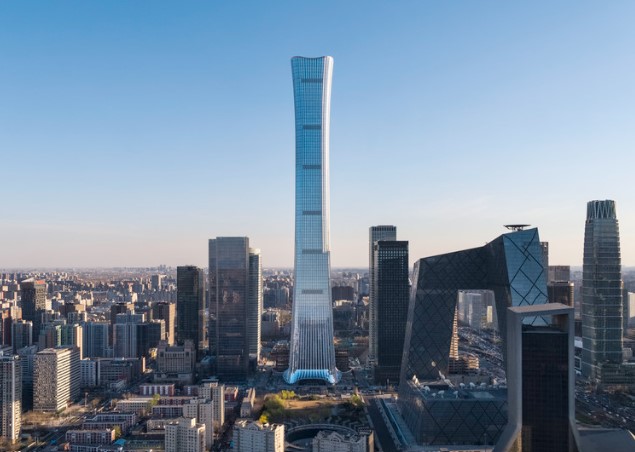
Elevate your designs with our Artificial Intelligence in construction course
If you’re interested in AI architecture design, you can check out our Artificial Intelligence in Construction Course, designed to empower you with the skills to revolutionise the construction industry.
This course isn't just about learning; it's about becoming a key player in driving the industry towards a more efficient, precise, and sustainable future. With AI's game-changing potential, you'll discover how to optimise design, streamline project management, and ensure timely, budget-friendly project delivery.
“By embracing AI tools with an open mind, we have the opportunity to reshape our architectural practices and embark on a journey of discovery and innovation”, says professor Takeuchi.


